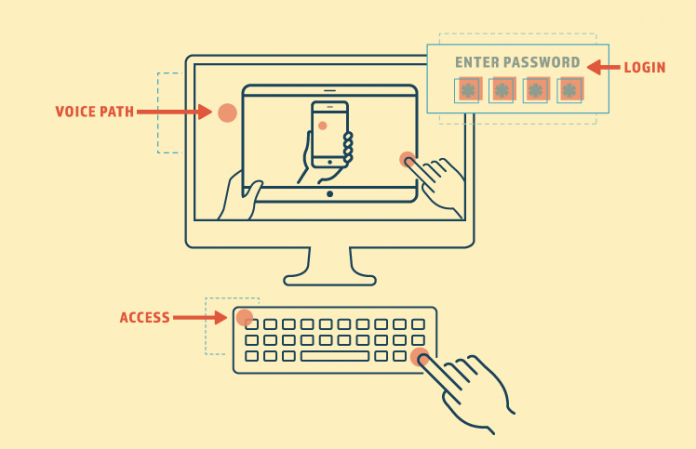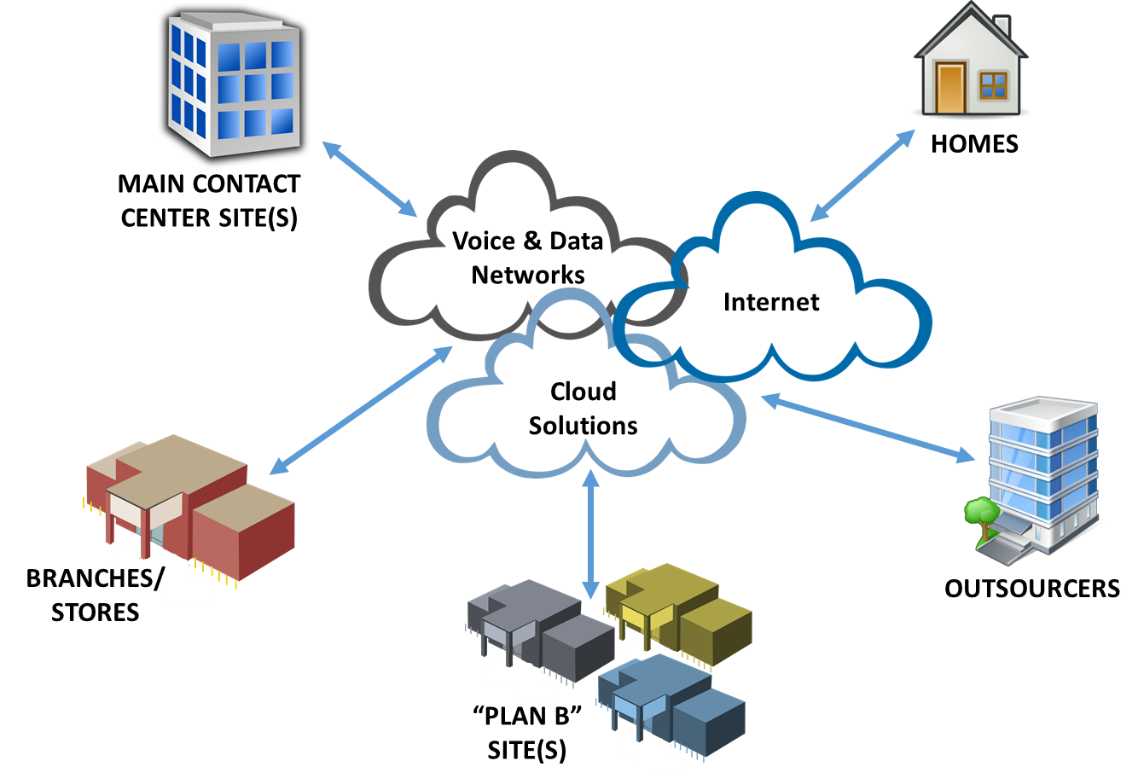
The need for remote access to core contact center infrastructure continues to grow. Whether implementing a home agent program, accommodating “on the go” leaders, establishing connectivity to outsourcers, ensuring business continuity, or tying into branches and retail outlets, businesses need effective communication between the contact center and a variety of locations.
Enhancements in core technology and network connectivity, along with the proliferation of cloud systems, create a simplified approach to remote access to contact center systems. For most VoIP contact center solutions, agents can specify the phone number to use at log in. Calls can be delivered to a cell phone, home analog line, or any extension on an existing PBX. Virtual Private Networks (VPN) and Virtual Desktop Infrastructure (VDI) (e.g., Citrix) offer the ability to securely log into the required systems remotely with limited reliance on the remote computer’s operating speed and capacity.
VPN access to back office systems provides a higher level of security than internet access, although both provide some security through sign-on and password access to the applications. Remote internet access with sufficient capacity and speed is more readily available for greater ease of connectivity to some of the staples of a remote workforce (e.g., calendars, video, Instant Messaging, screen sharing, recording/Quality Monitoring, overall performance visibility).
VDI is a virtualization approach in which the operating system and applications are managed in a data center. The desktop image is delivered over a network to an endpoint device, which allows the user to interact with the operating system and its applications as if they were running locally. The endpoint is flexible. Because little actual computing takes place at the endpoint, the range of acceptable devices is broad—older PCs or laptop devices will work, as will newer, more mobile devices.
Because all data in a VDI approach lives in the data center, not on the endpoint, there are significant security benefits. There is no data on the machine so no opportunity for it to be compromised. With VDI, IT only manages the roles-based images rather than a home PC for each person. IT can more easily support remote and mobile workers in this environment.
The proliferation of cloud solutions and applications also simplifies remote access. More corporate systems that remote workers need to access are cloud-based, such as CRM or core routing and reporting (across channels). Access is neutral to agent location and agent connectivity approach. Cloud solutions treat positions at the main site the same way they treat a remote worker (or remote office, or outsourcer, or…). A remote worker just needs internet access and a login, a browser, and a voice path if handling voice interactions. Again, cloud options enable a variety of device options—PCs, laptops, tablets, even low cost devices such as Chrome Books.
Any of these options (or combinations thereof) aids in simplicity. No more locking down desktops to avoid personal applications or providing the corporate “box” that the remote agent plugs the computer into.
Simplified remote access adds flexibility that companies need these days—whether for ramping staff up or down, providing business continuity and disaster recovery, supporting changes in the use of outsourcing partners, or tapping idle resources at branches or other remote sites. Depending on security concerns, a VPN to internal corporate systems may not be required.
Most centers use multiple systems, some premise-based and some cloud. So the use of a large capacity, high-speed home Internet with VPN and VDI is a likely and successful combination.





